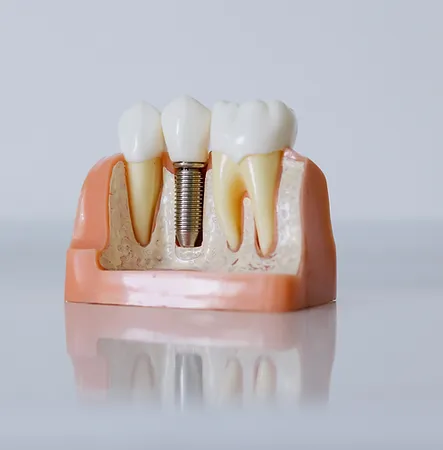Dental implants are a popular option for replacing missing teeth. They are a durable, long-lasting solution that can restore your smile and help you chew and speak with confidence. In this article, we will discuss what are dental implants, the benefits of dental implants, and what to expect during the dental implant procedure.
What Are Dental Implants?
A dental implant is a small, screw-shaped post made of titanium that is placed into the jawbone to replace a missing tooth root. Once the implant has been placed, it will fuse with the jawbone in a process called osseointegration. This creates a stable foundation for a dental crown, bridge, or denture to be attached to the implant.
Benefits of Dental Implants
- Improved Appearance: Dental implants look and feel like natural teeth. They are designed to blend in with your existing teeth and restore your smile.
- Improved Speech: Missing teeth can affect your ability to speak clearly. Dental implants can help to improve your speech and pronunciation.
- Improved Chewing Function: Dental implants function like natural teeth and can help you chew your food more effectively. This can improve digestion and overall health.
- Improved Oral Health: Dental implants are a standalone tooth replacement option, which means they do not require support from adjacent teeth. This helps to maintain the structure and health of the surrounding teeth and gums.
- Long-Lasting Solution: With proper care, dental implants can last a lifetime, making them a durable and cost-effective solution for missing teeth.
What to Expect During the Dental Implant Procedure
- Consultation and Treatment Plan: The first step in the dental implant procedure is a consultation with your dentist. During this visit, your dentist will evaluate your oral health and develop a treatment plan that is tailored to your needs.
- Implant Placement: The next step is the placement of the implant into the jawbone. This is typically done under local anaesthesia and can be completed in a single visit.
- Healing Period: After the implant has been placed, there will be a healing period of several months to allow the implant to fuse with the jawbone. During this time, a temporary tooth replacement may be used.
- Abutment Placement: Once the implant has fused with the jawbone, an abutment will be attached to the implant. This serves as a connector between the implant and the dental crown or bridge.
- Dental Crown or Bridge Placement: The final step in the dental implant procedure is the placement of the dental crown or bridge. This is attached to the abutment and provides a natural-looking and functional replacement tooth.
Conclusion
Dental implants are a popular option for replacing missing teeth. They offer many benefits, including improved appearance, improved speech, improved chewing function, improved oral health, and a long-lasting solution. The dental implant procedure involves several steps, including a consultation and treatment plan, implant placement, a healing period, abutment placement, and dental crown or bridge placement. If you are missing teeth and interested in dental implants, talk to your dentist to learn more about the procedure and whether it is right for you.

